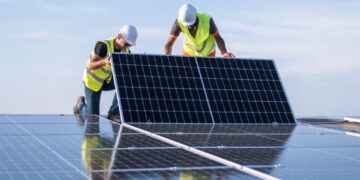Supporting low carbon investments through COVID-19 recovery targeting funding for ten key sectors across 21 emerging markets has the potential to generate $10.2 trillion in investment opportunity, create 213 million jobs, and reduce greenhouse gas emissions by 4 billion tons by 2030, says an IFC report published yesterday.
The report, Ctrl-Alt-Delete: A Green Reboot for Emerging Markets, analyzes the economic and climate benefits of a green recovery that focuses on decarbonizing existing and future energy infrastructure, building climate-smart cities, and helping speed the transition of key industries to greener production.
It finds that rebuilding emerging and developing economies today to be greener tomorrow can not only drive economic recovery from COVID-19 but also help diminish the disproportionate impact of climate change on the world’s poorest and most vulnerable people.
The report highlights how investment in ten sectors through post-COVID recovery efforts can help to support deliver economic recovery, create jobs, and help achieve the goal of limiting global temperature rise to below 2 degrees Celsius.
The report draws on lessons learned from IFC’s own investments and mobilization of private capital for climate business.
As the largest development finance institution supporting the private sector in emerging markets, IFC has experience creating and growing markets in key areas such as clean energy, sustainable cities, climate-smart agriculture, energy efficiency, green buildings, and green finance.
Thirty percent of IFC’s total committed and mobilized investments were in climate business in FY20, representing $6.8 billion.
The World Bank Group has adopted a target for 35 per cent of its financing to have climate co-benefits, on average, over the next five years. IFC catalyzes markets for climate business through advisory services to businesses, financial institutions, and governments.
IFC proactively works to create a global market for green investments to increase climate lending through capital markets and local financial intermediaries.
The report is available here.























